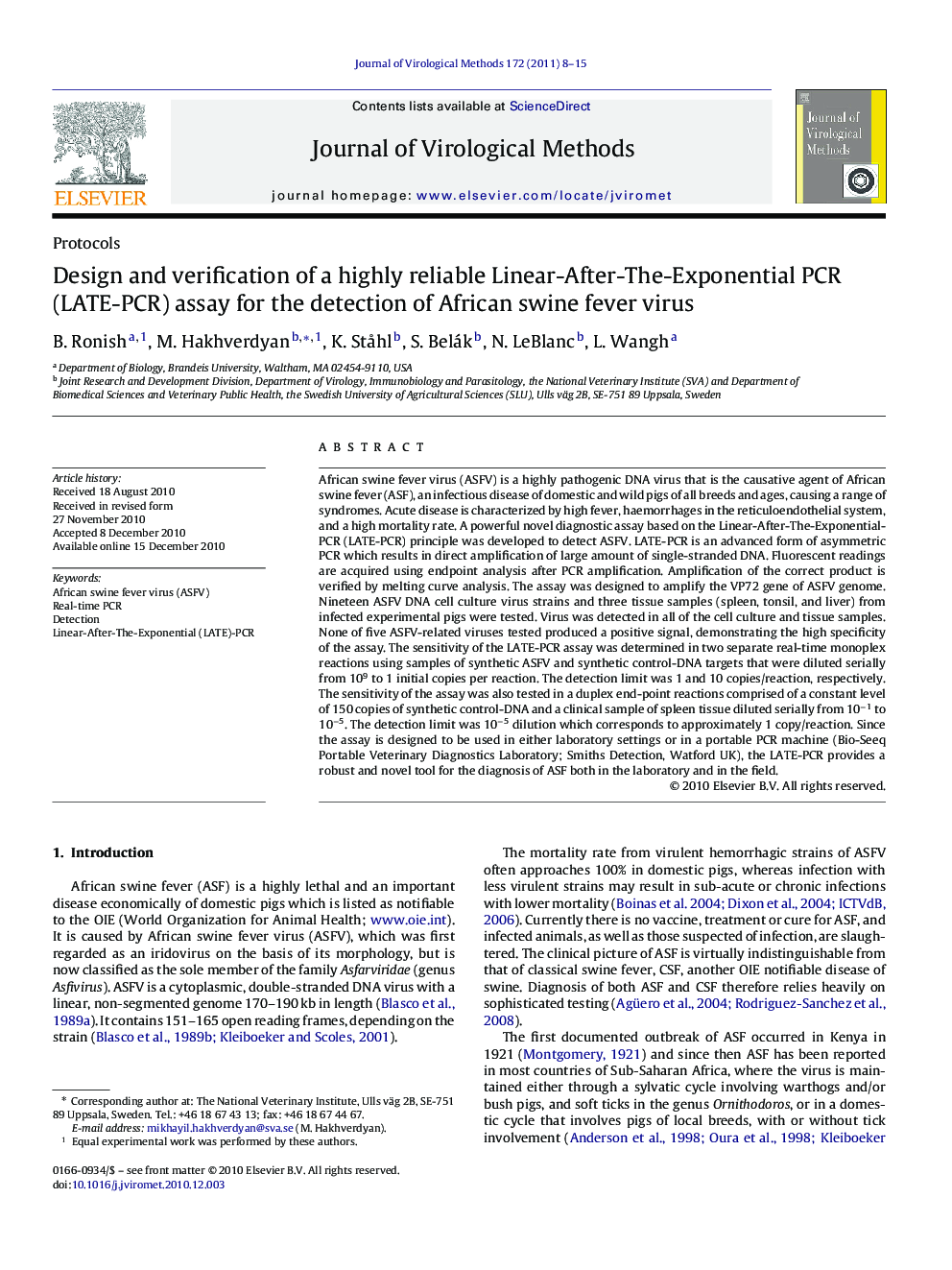| کد مقاله | کد نشریه | سال انتشار | مقاله انگلیسی | نسخه تمام متن |
|---|---|---|---|---|
| 3406987 | 1593493 | 2011 | 8 صفحه PDF | دانلود رایگان |

African swine fever virus (ASFV) is a highly pathogenic DNA virus that is the causative agent of African swine fever (ASF), an infectious disease of domestic and wild pigs of all breeds and ages, causing a range of syndromes. Acute disease is characterized by high fever, haemorrhages in the reticuloendothelial system, and a high mortality rate. A powerful novel diagnostic assay based on the Linear-After-The-Exponential-PCR (LATE-PCR) principle was developed to detect ASFV. LATE-PCR is an advanced form of asymmetric PCR which results in direct amplification of large amount of single-stranded DNA. Fluorescent readings are acquired using endpoint analysis after PCR amplification. Amplification of the correct product is verified by melting curve analysis. The assay was designed to amplify the VP72 gene of ASFV genome. Nineteen ASFV DNA cell culture virus strains and three tissue samples (spleen, tonsil, and liver) from infected experimental pigs were tested. Virus was detected in all of the cell culture and tissue samples. None of five ASFV-related viruses tested produced a positive signal, demonstrating the high specificity of the assay. The sensitivity of the LATE-PCR assay was determined in two separate real-time monoplex reactions using samples of synthetic ASFV and synthetic control-DNA targets that were diluted serially from 109 to 1 initial copies per reaction. The detection limit was 1 and 10 copies/reaction, respectively. The sensitivity of the assay was also tested in a duplex end-point reactions comprised of a constant level of 150 copies of synthetic control-DNA and a clinical sample of spleen tissue diluted serially from 10−1 to 10−5. The detection limit was 10−5 dilution which corresponds to approximately 1 copy/reaction. Since the assay is designed to be used in either laboratory settings or in a portable PCR machine (Bio-Seeq Portable Veterinary Diagnostics Laboratory; Smiths Detection, Watford UK), the LATE-PCR provides a robust and novel tool for the diagnosis of ASF both in the laboratory and in the field.
Journal: Journal of Virological Methods - Volume 172, Issues 1–2, March 2011, Pages 8–15